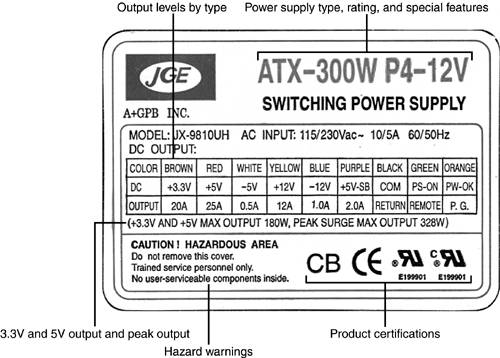Chapter 5. Power Supplies and Circuit Testing
| < Day Day Up > |
Chapter 5. Power Supplies and Circuit TestingIn this chapter
Power issues are largely ignored by most computer users, but a properly working power supply is the foundation to correct operation of the system. When the power supply stops working, the computer stops working, and when a power supply stops functioning properly ”even slightly ”all sorts of computer problems can take place. From unexpected system reboots to data corruption, from unrecognized bus- powered USB devices to system overheating , a bad power supply is bad news. The power supply is vital to the health of the computer. So, if your computer is acting "sick," you should test the power supply to see if it's the cause. To keep the power supply working properly, use surge suppression and battery backup (UPS) units. The power supply is really misnamed: It is actually a power converter that changes high-voltage alternating current ( AC ) to low-voltage direct current ( DC ) . There are lots of wire coils and other components inside the power supply that do the work, and during the conversion process, a great deal of heat is produced. A fan in the power supply dissipates the heat created by the operation of the power supply. That same fan also helps to cool the rest of the computer. Figure 5.1 shows a typical desktop computer's power supply. You can use the label attached to the power supply to determine its wattage rating and see important safety reminders. Figure 5.1. A typical power supply label. This power supply supports the ATX-12V connection required by motherboards for the Pentium 4 processor.
How can you tell if a power supply meets minimum safety standards? Look for the backward UR logo, which indicates the power supply has the UL and UL Canada safety certifications as a component (the familiar circled UL logo is used for finished products only). The CE mark indicates the power supply has met the requirements of the European Union for power supplies. |
| < Day Day Up > |
EAN: N/A
Pages: 310
